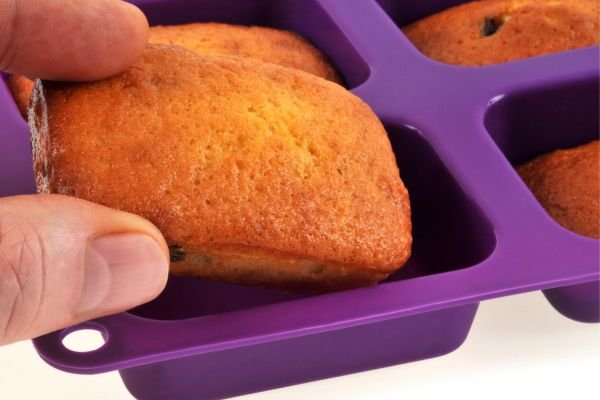Are you tired of using metal cake pans that leave your cakes unevenly baked or stick to the pan, ruining the presentation? Do you want to try something new, like a silicone cake mold, but are unsure whether it’s safe and effective?
In this article, we will explore the pros and cons of using silicone molds for baking cakes and provide tips on how to use them properly.

What is a Silicone Cake Mold?
A silicone cake mold is a flexible, non-stick baking pan made from food-grade silicone material. It comes in various shapes and sizes, from traditional round or rectangular shapes to fun novelty designs like hearts, stars, and animals.
Silicone molds are preferred by many home bakers as they offer several benefits over traditional metal pans.
Pros and Cons of using Silicone Molds for Baking Cakes
Pros:
- Even baking: Silicone molds distribute heat evenly, resulting in cakes that are evenly baked without overcooking or burning.
- Non-stick surface: Silicone molds have a non-stick surface that allows cakes to be easily removed without breaking or sticking to the pan.
- Easy to clean: Silicone molds are dishwasher safe and easy to clean by hand as well.
- Versatile: Silicone molds can be used for baking cakes, making gelatin desserts, freezing ice cream, and even crafting soap.
Cons:
- Not heat resistant: Although silicone molds can withstand temperatures up to 500°F, they can still warp or melt if placed too close to the heat source.
- Require support: Silicone molds need to be supported by a baking sheet or tray while in the oven, as they are too flexible to hold their shape on their own.
- Not ideal for browning: Silicone molds do not conduct heat well, which means that they do not brown cakes as well as metal pans.
- Expensive: Silicone molds are generally more expensive than traditional metal pans.
How to use a Silicone Cake Mold for Baking
Preparing the mold:
- Clean the silicone mold thoroughly with warm soapy water and rinse it with clean water.
- Grease the mold with butter or non-stick spray. You can also dust it with flour or cocoa powder to prevent the cake from sticking.
Preparing the batter:
- Follow your cake recipe as usual, making sure to mix the batter well.
- Pour the batter into the silicone mold, leaving at least an inch of space at the top for the cake to rise.
Baking the cake:
- Place the silicone mold on a baking sheet or tray to provide support.
- Preheat the oven to the recommended temperature.
- Bake the cake for the recommended time, checking it periodically to ensure it is not overcooking or undercooking.
- Remove the cake from the oven and let it cool before removing it from the mold.
Removing the cake from the mold:
- Carefully turn the mold upside down on a plate or cooling rack.
- Gently press on the bottom
- Gently press on the bottom of the mold to release the cake.
- If the cake is stuck, run a knife or spatula along the sides of the mold to loosen it.
Tips for using Silicone Cake Molds
To ensure a successful baking experience with silicone molds, here are some helpful tips to keep in mind:
- Choose the right size and shape: Make sure to select a mold that is appropriate for your recipe, and consider the shape you want for your cake.
- Grease the mold properly: Use butter, non-stick spray, or a dusting of flour or cocoa powder to prevent the cake from sticking.
- Avoid using sharp objects: Do not use sharp objects to remove the cake from the mold, as they can damage the silicone surface.
- Do not place the mold directly on the oven rack: Always support the silicone mold with a baking sheet or tray while in the oven.
- Clean the mold properly: Clean the mold with warm soapy water and rinse it with clean water, avoiding abrasive materials that can damage the silicone.
FAQs
It is recommended to grease the silicone mold to prevent the cake from sticking.
Yes, silicone molds can withstand oven temperatures up to 500°F.
Clean the silicone mold with warm soapy water and rinse it with clean water, avoiding abrasive materials.
Yes, silicone molds can be used for making gelatin desserts, freezing ice cream, and even crafting soap.
Silicone molds are generally more expensive than traditional metal pans, but they can last longer and provide better baking results.
Conclusion
Silicone cake molds are a great alternative to traditional metal pans, offering several advantages such as even baking, a non-stick surface, and easy cleaning.
By following the tips provided in this article, you can use silicone molds effectively and achieve professional-looking cakes every time.
